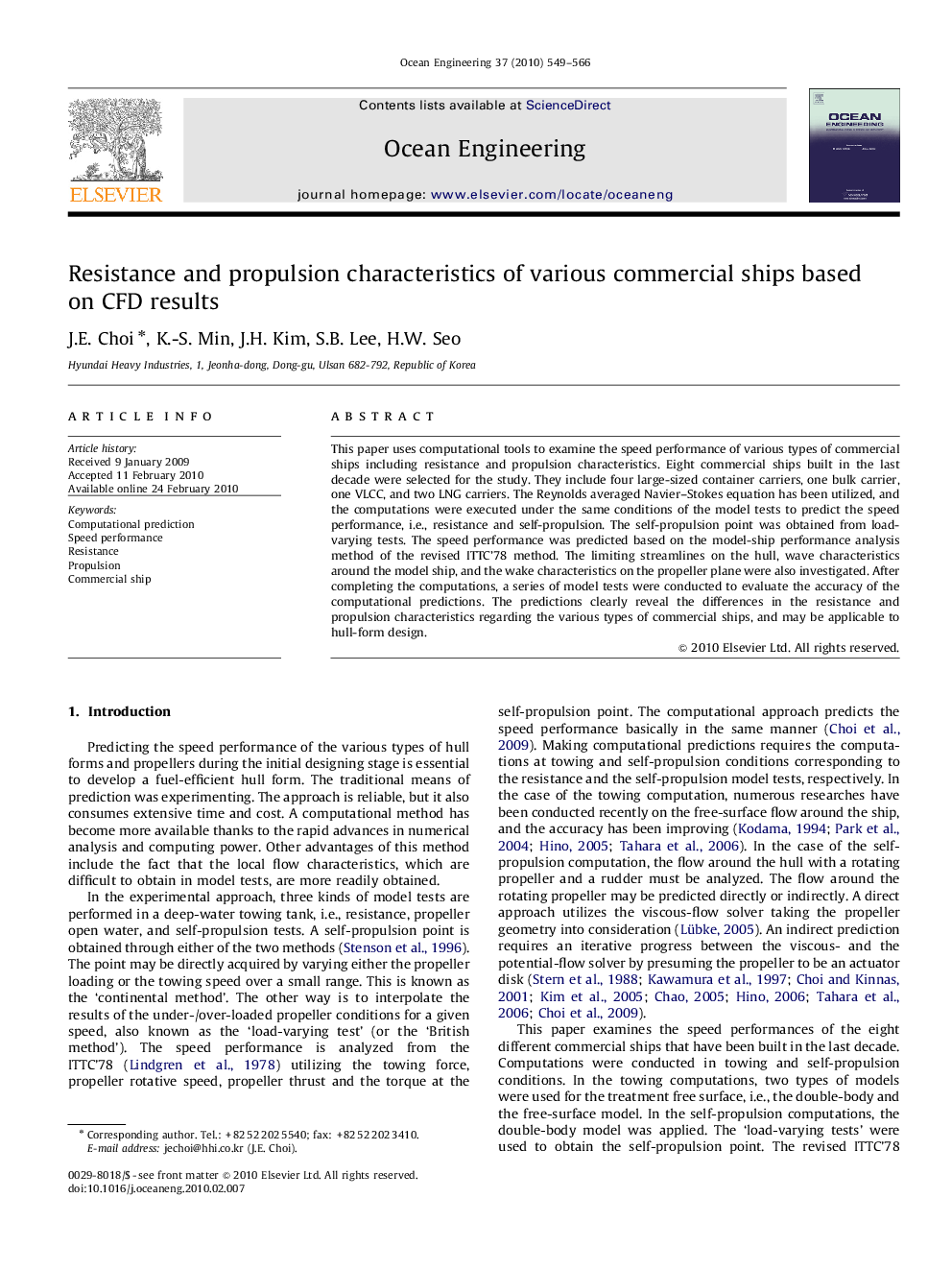| Article ID | Journal | Published Year | Pages | File Type |
|---|---|---|---|---|
| 1727045 | Ocean Engineering | 2010 | 18 Pages |
Abstract
This paper uses computational tools to examine the speed performance of various types of commercial ships including resistance and propulsion characteristics. Eight commercial ships built in the last decade were selected for the study. They include four large-sized container carriers, one bulk carrier, one VLCC, and two LNG carriers. The Reynolds averaged Navier-Stokes equation has been utilized, and the computations were executed under the same conditions of the model tests to predict the speed performance, i.e., resistance and self-propulsion. The self-propulsion point was obtained from load-varying tests. The speed performance was predicted based on the model-ship performance analysis method of the revised ITTC'78 method. The limiting streamlines on the hull, wave characteristics around the model ship, and the wake characteristics on the propeller plane were also investigated. After completing the computations, a series of model tests were conducted to evaluate the accuracy of the computational predictions. The predictions clearly reveal the differences in the resistance and propulsion characteristics regarding the various types of commercial ships, and may be applicable to hull-form design.
Related Topics
Physical Sciences and Engineering
Engineering
Ocean Engineering
Authors
J.E. Choi, K.-S. Min, J.H. Kim, S.B. Lee, H.W. Seo,
